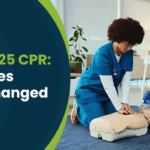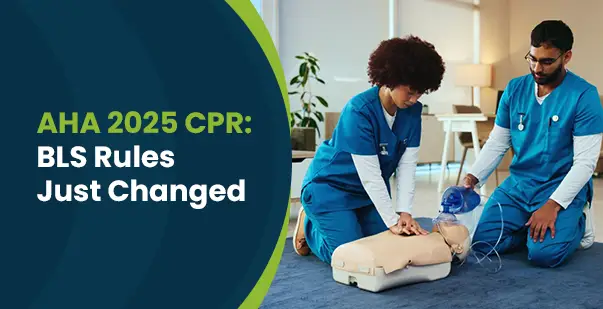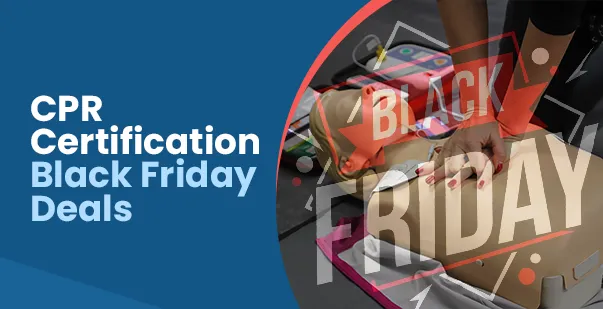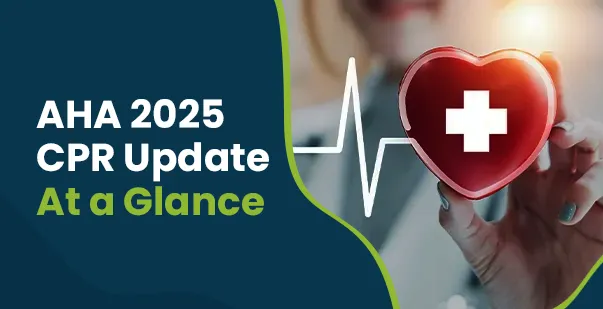Each year, thousands of people in the U.S. are hospitalized for burn injuries, including serious chemical burns.
These types of burns result from exposure to toxic chemicals that touch the skin or eyes, leading to redness, pain, or even tissue damage deeper within. The result usually hinges on how fast and accurately you react.
This manual addresses necessary first aid procedures, easy prevention measures, and critical details that will assist in shielding you and your loved ones from chemical burn injuries.
What are Chemical Burns?
A chemical burn is caused when a corrosive substance harms your skin, eyes, or internal tissues. Some of the most common causes are contact with household cleaners, industrial chemicals, or even bad skincare products.
Most chemical burns on the skin occur by accident — such as spilling bleach, hydrogen peroxide, or a harsh skincare acid. Chemical burns on the face are particularly delicate and need emergency attention, as the skin is thinner and more susceptible to scarring.
Severity may be from mild irritation to damage of deep tissue. Mild chemical burns usually heal well, but severe burns may result in scarring, nerve injury, or life-threatening complications. Early treatment is the best way to minimize long-term damage.
Individuals who work with chemicals—like construction workers, factory workers, laboratory technicians, mechanics, plumbers, and farmers—are more likely to be at risk. But chemical burns also occur at home, from everyday products such as:
- Bleach
- Drain cleaners
- Hydrogen peroxide
- Acids used in skincare (e.g., AHAs, BHAs, retinoids)
Children are especially susceptible. More than 40,000 American children went to emergency rooms over a period of 17 years because of chemical burns caused by cleaning products.
Online First Aid Training.
Prepare for real emergencies with our online First Aid Certification.
Types of Chemical Burns
Chemical burns can be alarming, but knowing the different types can help you respond quickly and effectively. Let’s take a closer look at the various types of chemical burns to better understand how they happen and what makes each one unique.
1. Acid Burns
Acid burns happen when strong acids, like sulfuric acid or hydrochloric acid, come into contact with the skin. These burns cause a reaction that leads to “coagulative necrosis,” where the affected area hardens and turns black or dark.
Acid burns can be very painful and often result in scarring if not treated quickly. Common sources of acid burns include battery acid, cleaning products, and some industrial chemicals.
Immediate first aid is important to prevent the burn from worsening.
2. Alkali Burns
Alkaline substances can be more dangerous than acids because they penetrate deeper into the skin, causing more extensive tissue damage.
Unlike acids, which create a protective layer by hardening tissue, alkalis break down cell structures, leading to ongoing damage even after initial contact. This can result in more severe burns, often without immediate pain, which delays treatment.
A surprising fact is that alkali burns from common products like drain cleaners can continue damaging tissue long after the chemical is washed off.
3. Organic Solvent Burns
Organic solvent burns occur when the skin comes into contact with chemicals like acetone, ethanol, or toluene. These solvents can irritate the skin, causing redness, dryness, and sometimes blistering.
If exposure is prolonged or widespread, it can lead to more severe damage or even affect the nervous system.
For example, nail polish removers often contain acetone, and spilling it on the skin without washing it off quickly can cause an uncomfortable burn or irritation.
4. Oxidizing Agent Burns
Chemicals like chlorine or hydrogen peroxide can cause serious burns because they react strongly with organic materials, including the skin.
These chemicals, called oxidizing agents, can not only cause chemical burns but may also generate heat, leading to thermal burns. The combination of these effects can result in significant tissue damage.
Common household items, like bleach or disinfectants, often contain oxidizing agents.
5. Corrosive Burns
Chemicals that promote combustion or react strongly with organic materials, like chlorine or hydrogen peroxide, can cause severe burns.
These burns can result from both the chemical reaction and the heat generated, making them especially harmful. The skin can be damaged deeply, leading to significant pain and potential scarring.
Common sources of these burns include disinfectants, bleach, and various industrial chemicals.
6. Irritant Burns
Substances that cause skin irritation without severely damaging tissue are common in everyday products like soaps, detergents, and some cosmetics.
While these chemicals don’t typically burn deeply, they can still cause uncomfortable symptoms such as redness, itching, and mild swelling.
These types of burns are generally not severe and tend to heal on their own, but repeated exposure or sensitive skin can lead to more irritation.
Symptoms and Signs of Chemical Burns
Symptoms of a chemical burn depend on the chemical, where it came in contact with, and how long it remained on the skin or inhaled or swallowed.
| Severity of Burn | Common Symptoms |
| First-degree (Mild) | – Redness- Dry skin- Mild swelling- Tender or sore skin- Peeling |
| Second-degree (Moderate) | – Blisters- Wet or shiny skin- Swelling- Severe pain- Skin sloughing |
| Third-degree (Severe) | – White, leathery, or charred skin- Numbness- No pain in center (nerve damage)- Surrounding swelling |
| Chemical Burn on Skin | – Redness or rash- Burning pain- Blisters or peeling- Numbness- Blackened or dead skin |
| Chemical Burn on Face/Eyes | – Red or watery eyes- Blurry vision- Pain or irritation- Sensitivity to light |
| Inhaled Chemical Fumes | – Coughing- Throat irritation- Shortness of breath- Chest pain- Dizziness |
| Swallowed Chemical | – Burns on lips/mouth- Drooling- Trouble swallowing- Abdominal pain- Vomiting (possibly with blood) |
How are Chemical Burns Diagnosed?
Your healthcare provider can often diagnose a chemical burn by looking at the size, depth, and other details of the burn on your skin. For burns in your eyes, or if you’ve swallowed a chemical, they might use additional tests to help diagnose the injury and understand its severity.
1. Clinical Evaluation
The first step in diagnosing chemical burns is a clinical evaluation, where a healthcare provider gathers information about the injury. They will ask questions about how the burn occurred, such as what chemical caused it, how long the skin was exposed, and what symptoms the patient is experiencing, like pain or blistering.
For example, if someone accidentally spills a household cleaner containing bleach on their arm, the doctor will want to know the type of cleaner, the duration of contact, and whether the person washed the area with water afterward.
This information helps the provider understand the severity of the burn and decide on the best treatment approach.
2. Blood Tests
Blood tests are an essential part of diagnosing chemical burns, as they help determine the overall health of the patient and identify any complications caused by the chemical exposure.
For instance, a complete blood count (CBC) can reveal signs of infection or inflammation, while liver and kidney function tests assess how well these organs are coping with the toxic effects of the chemicals.
In fact, a study found that up to 20% of patients with severe chemical burns experience kidney complications, highlighting the need for thorough testing
Therefore, quick and accurate blood tests can guide treatment decisions which ensures the best outcomes for patients.
3. Endoscopy
Endoscopy is a procedure used to check for damage in the digestive tract or airways after a chemical burn.
If someone has swallowed or inhaled a harmful chemical, doctors may use an endoscope, which is a thin, flexible tube with a camera, to look inside the throat, esophagus, stomach, or lungs. This helps them see any burns or injuries caused by the chemical.
The doctor inserts the endoscope through the mouth or nose, allowing them to assess the extent of the damage and determine the best treatment. It’s a crucial step for serious chemical exposure cases.
4. Eye Exam
If a chemical burn affects the eyes, a thorough eye exam is essential for assessing the injury’s extent.
Eye specialists may use a special dye called fluorescein during the exam. This dye helps identify any scratches or damage to the cornea, the eye’s clear front surface, which might not be visible otherwise. Interestingly, some household products like dishwashing liquid or certain shampoos can cause serious eye irritation if splashed in, leading to burns.
Prompt examination and treatment are crucial, as untreated chemical burns can lead to permanent vision loss.
5. Imaging
Imaging studies, like X-rays or CT scans, help doctors look for deeper injuries from chemical burns. These tests are especially important if someone has inhaled harmful fumes or has extensive burns.
For example, a chest X-ray can show if there’s damage to the lungs, while a CT scan provides detailed pictures of internal organs and tissues.
Using imaging can help doctors better understand the extent of the injury, check for any complications, and determine the best treatment plan. This helps ensure the patient receives the care they need to heal properly.
First Aid Treatment for Chemical Burns
Accidents can happen in the blink of an eye, and when it comes to chemical burns, knowing how to react quickly and effectively can make all the difference. Let’s get into the essential first aid treatments that can help you respond with confidence and care:
1. Ensure Safety
When dealing with a chemical burn, the first step is ensuring safety. You need to quickly remove the person from the source of the chemical to prevent further exposure.
For instance, if someone accidentally spills a strong acid on their skin while cleaning, you should guide them away from the cleaning area immediately. This action stops the burn from worsening and protects them from additional harm.
Always remember that safety comes first; ensuring the area is clear of any hazardous materials helps create a safer environment for both you and the affected person.
2. Identify the Chemical
When you experience a chemical burn, one of the first things to do is identify the chemical involved. Look for any labels or packaging that can help you figure out what substance caused the burn. Knowing what type of chemical it is can really help you decide on the right treatment.
For example, some chemicals require different rinsing techniques or additional care. If you can’t find the label, try to remember where you were and what you were using when the burn happened. This information can be very helpful when you talk to medical professionals later on.
Always remember, the more details you have about the chemical, the better prepared you will be to handle the situation.
3. Initial Actions
When a chemical burn happens, your first step is to act quickly. Start by removing any clothing or jewelry that came into contact with the chemical. This helps prevent the substance from spreading to other areas of your skin.
Next, rinse the affected area with lukewarm running water. Let the water flow gently over the burn for at least 10 to 20 minutes. This step is crucial as it flushes out the chemical and reduces damage to your skin.
Just remember not to scrub or use ice, as that could make the injury worse. The goal here is to keep it simple and effective to ensure your comfort and safety.
4. Specific Treatments Based on the Chemical
Identifying the type of chemical involved in a burn helps determine the right treatment. If it’s an acid, rinsing the affected area with water for at least 10 to 20 minutes is crucial. Avoid using substances like baking soda for neutralization, as this might worsen the situation.
If you’re dealing with an alkali, rinsing with water is even more important because these substances can cause deeper damage. It’s best to keep the water running continuously, ensuring the chemical is flushed out completely. Resist the urge to apply vinegar or other acidic solutions, as this can lead to a harmful reaction.
For chemicals like bleach or solvents, rinsing thoroughly is the way to go. After rinsing, if you notice any lingering symptoms or if the burn appears severe, seeking medical attention becomes essential. Taking these steps can make a significant difference in recovery, so staying calm and focused is key.
5. Comfort Measures
Comfort measures are important after a chemical burn, especially for managing pain. Over-the-counter pain relievers like ibuprofen or acetaminophen can help ease discomfort.
Just be sure to follow the recommended dosages on the packaging or ask a healthcare professional if you’re unsure. Keeping the affected area clean and dry also aids in the healing process.
If the pain persists or gets worse, don’t hesitate to reach out to a doctor for further advice.
Emergency Medical Care for Chemical Burns
In case of a chemical burn, seek emergency assistance immediately, call 911 if you do not know how severe the injury is or if the victim is stable. Give the emergency personnel detailed information on –
- The number of individuals injured and their locations.
- The manner in which the injury occurred.
- If emergency responders can quickly access the burned or if they are pinned down.
- The chemical’s name, its strength, and the quantity involved.
- How long the individual has been exposed to the chemical.
Emergency personnel are trained to assess chemical burns, initiate treatment, and transport patients to the hospital.
For burns more than 3 inches in width, too deep or appearing in the face, eyes, groin, hands, feet, buttocks, and joining call for emergency assistance.
Even if the burn is minor and you’ve performed primary first aid, it’s best to call your physician. Your doctor will be able to explain the injury and the chemical, and tell you whether you require additional treatment.
Chemical Burn Prevention
Before we dive into how to prevent chemical burns, let’s take a moment to think about the little things we do every day. Whether it’s cleaning our homes or handling industrial materials, being aware of our surroundings and the substances we use can make all the difference in keeping ourselves and others safe.
- Read Labels: Always read product labels and safety data sheets before using chemicals.
- Use PPE: Wear personal protective equipment (gloves, goggles, and masks) when handling chemicals.
- Proper Storage: Store chemicals in their original containers, tightly closed, and in a cool, dry place away from children.
- Keep Away from Heat: Store flammable chemicals away from heat sources and direct sunlight.
- Ventilation: Use chemicals in well-ventilated areas to avoid inhaling harmful fumes.
- Avoid Mixing: Never mix different chemicals unless instructed, as it can produce dangerous reactions.
- Use Tools: Use appropriate tools (like funnels or scoops) to handle chemicals safely.
- First Aid Kit: Keep a first aid kit stocked with items for chemical burns (e.g., sterile water, burn ointment).
- Emergency Plan: Have an emergency plan in place, including knowing the location of the nearest eyewash station and emergency phone numbers.
- Educate Others: Train family members or coworkers on chemical safety and first aid for chemical burns.
Following these simple tips can significantly reduce the risk of chemical burns and enhance safety when handling chemicals.
Master First Aid Skills
First Aid Certification course that prepares you for real-life situations.
Stay Safe from Chemical Burns for a Healthier Tomorrow
Knowing how to treat and prevent chemical burns is essential for everyone. Always act quickly if an incident occurs, rinsing the affected area and seeking medical help when needed. Remember to prioritize safety when handling chemicals—use protective gear and follow all instructions carefully. Staying informed about the dangers of different substances can make a significant difference. With a little awareness and preparation, you can keep yourself and others safe from chemical burns.
FAQ
How can I quickly heal a chemical burn?
Rinse with water for 20 minutes, dry and keep clean, cover with sterile bandage. Seek medical attention if necessary.
Does Neosporin help chemical burns?
Not immediately. Rinse first. Ointments can only be applied if the doctor recommends once the burn is washed off.
How long does it take to heal a chemical burn?
A mild burn typically takes a few days, whereas a moderate burn heals in 1-3 weeks, and if it is severe, it may take weeks or even months with proper medical treatment.
How to know if a chemical burn is serious?
It’s serious if it’s deep, painful, large, on the face/eyes, or caused by swallowing/inhaling chemicals.
Can a chemical burn get worse?
Yes. Some burns deepen over time, especially alkali burns. Always monitor and seek care if symptoms worsen.









